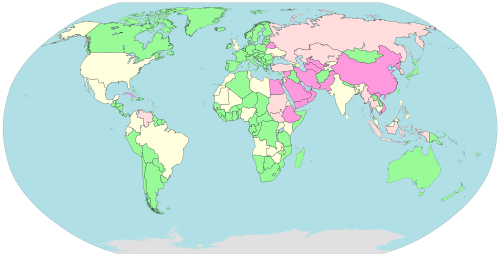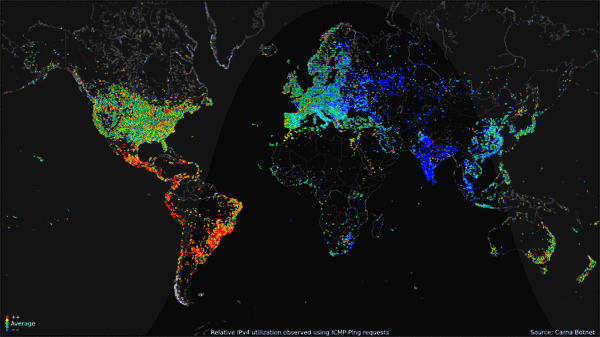


Number of Internet users in 2011
This map illustrates the total number of Internet users in a country as well as the percentage of the population that has Internet access in 2011. Source: Information Geographies at the Oxford Internet Institute.[2]


Pervasive censorship Substantial censorship Selective censorship Under surveillance by en:Reporters Without Borders Little or no censorship Not classified / no data






Statistiken:
- Global Site Speed Overview: How Fast Are Websites Around The World? google analytics, April 19, 2012
- List of number of Internet hosts available within a country, CIA
Artikel:
- en:Global Internet usage
- en:Internet censorship by country
- en:Languages used on the Internet
- en:List of countries by number of Internet users
- en:List of sovereign states in Europe by number of Internet users
- en:List of countries by number of broadband Internet users
- en:List of countries by number of Internet hosts
Internet users in Europe:
| ||||||
Quellenangaben
Bearbeiten- ↑ a b "Percentage of Individuals using the Internet 2000-2012", International Telecommunications Union (Geneva), June 2013, retrieved 22 June 2013
- ↑ "Internet Population and Penetration 2011", Information Geographies at the Oxford Internet Institute (DeSabbata, Graham OII)
- ↑ Top 5 browsers in Philippines on May 2012 Statcounter Global Stats
- ↑ OpenNet Initiative "Summarized global Internet filtering data spreadsheet", 8 November 2011 and "Country Profiles", the OpenNet Initiative is a collaborative partnership of the Citizen Lab at the Munk School of Global Affairs, University of Toronto; the Berkman Center for Internet & Society at Harvard University; and the SecDev Group, Ottawa
- ↑ Due to legal concerns the OpenNet Initiative does not check for filtering of child pornography and because their classifications focus on technical filtering, they do not include other types of censorship.
- ↑ Internet Enemies, Reporters Without Borders (Paris), 12 March 2012
- ↑ Source: InternetWorldStats for countries of Europe, Asia updated for June 30, 2012
